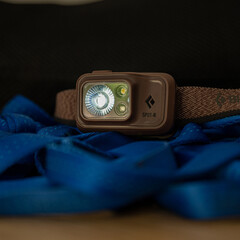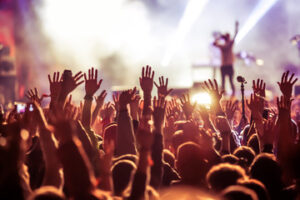Formazione Aziendale is a vital component of employee development that equips professionals with skills to succeed in their roles. Programs help increase productivity, foster engagement and retention, and prepare employees to adapt to changing business landscapes.

If you’re interested in becoming a corporate trainer, explore this career guide to understand what the role involves, and what qualifications you need to get started.
The right training style can help your employees retain the information you’re teaching them. Unfortunately, many corporate training programs fail to consider the different learning styles of their employees. As a result, employees are often confused or mislead by the content, and they are less likely to apply new skills in the workplace. Fortunately, there are several training styles that you can use to reach your employees’ learning styles and increase the effectiveness of your company’s training program.
The most common learning styles are visual, auditory and kinesthetic. Each learning style is characterized by the way in which an individual best processes information. For example, a person who is a visual learner will respond better to charts, graphs and diagrams in a learning environment. Similarly, a person who is an auditory learner will thrive in a classroom setting where they can participate in discussions and lectures. And a person who is a kinesthetic learner will prefer hands-on projects and activities that allow them to physically engage with the material.
While a person may have a dominant learning style, most people have multiple learning styles. For this reason, it is important for corporate trainers to incorporate training techniques that cater to all four learning styles. For example, a person who is an auditory and visual learner may benefit from group discussions and videos, while a kinesthetic learner might enjoy role-playing and interactive exercises.
If you’re interested in a career as a corporate trainer, you’ll need to pursue a bachelor’s degree and earn a certificate or a master’s in business with a specialization in human resources management or organizational development. You should also focus on courses that teach you about instructional design, training theory and adult learning principles.
According to the Bureau of Labor Statistics, a training and development specialist can advance into a managerial position such as a training and development manager or HR manager after several years of experience. Additionally, a training and development specialist can also obtain a certification in a specific topic such as leadership or communication. Regardless of the certification, you should choose a degree program from an accredited university to ensure that you receive a quality education.
Individual Courses
Individual courses are a great option for students who wish to take an elective, work toward their degree at a slower pace, or take courses that aren’t offered by their school. Taking individual college courses can also help students maintain their GPA, meet graduate admission requirements, or even transfer credits to another school.
Teamwork and communication skills training programs teach employees to interact in ways that create cohesive, high-functioning teams. Through role-playing and other activities, participants learn to recognize and bridge their differences, communicate in a way that engenders trust, and create a work environment that supports all types of workers.
Time management training helps employees develop effective strategies and tools for optimizing their use of time, enhancing productivity, and reducing stress. Programs typically include lessons on delegating tasks, overcoming procrastination, and creating realistic goals for the workday.
Conflict resolution training helps employees recognize when a problem is brewing and address it quickly. Participants learn to listen more intently and speak less defensively, allowing others to express their concerns in a safe and productive way.
Presentation skills training helps employees develop their public speaking capabilities and become more confident, engaging speakers. Through workshops and practice sessions, participants learn how to structure presentations, use visual aids effectively, manage nervousness, and handle questions from audience members.
Intercultural communication training programs help employees learn to build rapport across cultural boundaries and facilitate teamwork in diverse environments. Through cross-cultural simulations, case studies, and interactive discussions, participants gain the skills needed to foster respectful, inclusive, and globally-minded workplaces.
Career development training programs provide a clear path for employee advancement within the company. This helps reduce attrition rates and fuels progress toward business goals.
Performance review and feedback training demystifies the often emotionally fraught process of giving and receiving feedback. These programs empower employees to see their own potential for growth and encourage the kinds of relationships that drive a company’s retention rates. The result is a highly motivated workforce with a clear, rewarding career trajectory that benefits the entire organization.
Group Courses
Group training sessions offer the advantage of a standardized curriculum that can be delivered to multiple employees at one time. This can be a great benefit for organizations that need to train large numbers of employees in a short amount of time.
When planning to conduct group courses, it is important to consider several factors. For example, who will be delivering the training? This could be a trainer within your organization or an external vendor. You also need to think about where and when the training will take place. This will require you to schedule meetings in a space that can accommodate all the employees attending and is available at the time of your choosing.
Corporate training can be a good way to promote teamwork, which can help employees learn from each other and improve their performance. However, some employees may not be comfortable asking questions in front of a group and might not fully grasp the material. To address these concerns, it is important to frame the training in a positive light and encourage employee participation.
To facilitate group learning, CourseWorks includes the ability to create groups at both the course and activity levels. For example, you can create groupings for forum activities to allow learners to interact and collaborate with other members of their cohort in a particular course. The groups interface is accessible through the Administration block in each course or activity. Learners can see all of the groupings to which they belong in a list and a count of activities assigned to each grouping on a separate page.
Courses can be set up to automatically enroll users into the appropriate grouping upon enrollment. This can be done by selecting the Group mode option for a course and navigating to the Administration block. You can also select the Groups mode for an individual activity and set the group that should be enrolled in the Activity Settings menu.
It is also possible to create groups at the account level, which can be useful for importing users from a CSV file or managing permissions on an ongoing basis. When creating groups, it is recommended to use a naming convention that differentiates one group from another so that the groups are easily identifiable.
Online Courses
The online course format allows corporate training to be delivered at a pace that fits the learning styles of individual employees. In addition, it helps reduce the cost and planning of classes for a corporation. Online learning also makes it easier to track and report on the success of a company’s training program, which is critical for maintaining return on investment and securing leadership buy-in.
One of the most effective ways to deliver training is through a series of courses that build on each other. This method is used for many different types of courses, including software instruction, customer service skills, and management training. It’s also a great way to teach the basics of a new skill or product. For example, a company may offer a basic digital skills course for all employees, followed by more advanced courses for those who need it.
In addition, online courses can help to create a more cohesive and collaborative learning environment. By allowing learners to work together on projects and assignments, they can learn from each other and share ideas. This can lead to a more engaged and knowledgeable workforce, as well as increased productivity.
Having the right software to help manage online learning programs is essential for ensuring the success of your training efforts. Look for a solution that provides reporting on everything from assessment scores to course completion rates. This can be done in a matter of minutes and will allow you to see at a glance who hasn’t completed the required training, or who might require re-training.
You should also look for a platform that has a Kanban assignment tracking dashboard, and can display course progress in real-time. This will make it easy to set and monitor deadlines for your teams, while ensuring that no assignment slips through the cracks. Some platforms will also allow you to add a team leader as an admin, so that they can control user access and delete people from the team if necessary. This makes it much easier to keep your training program running smoothly, while also providing the best learning experience for your teams.

